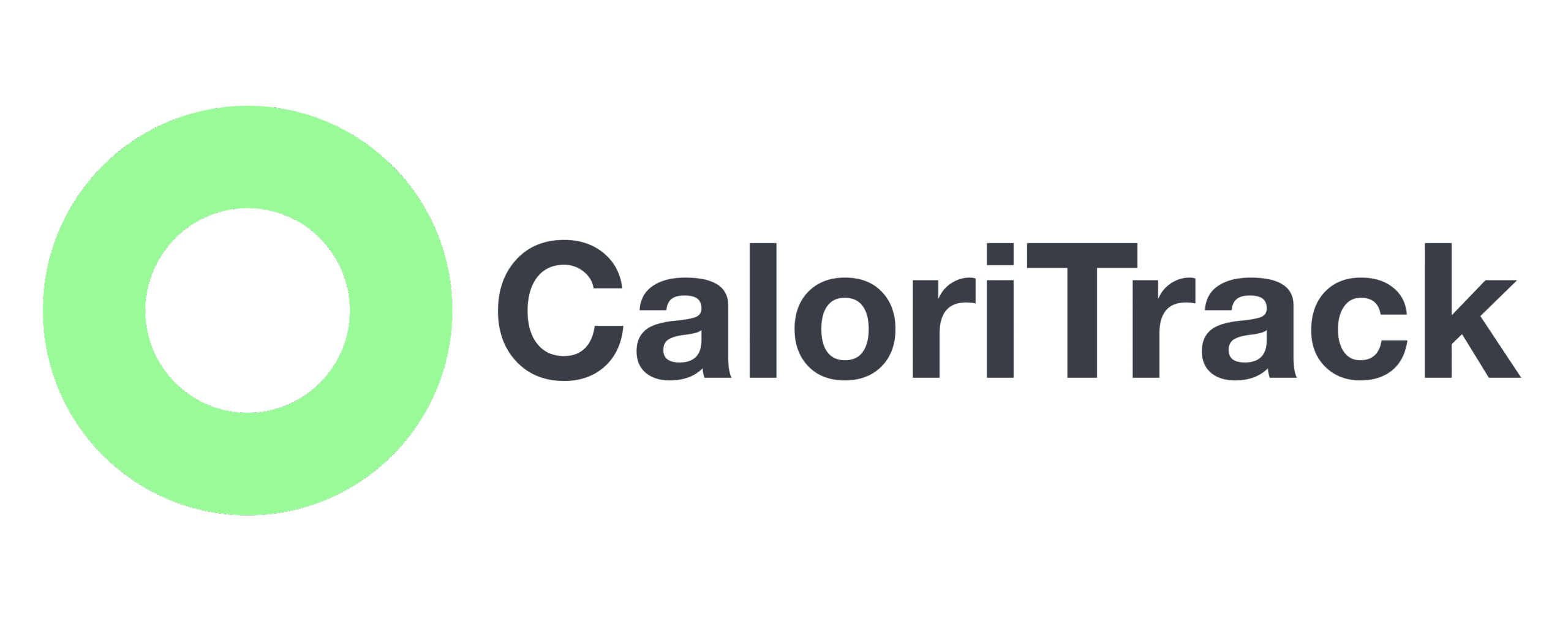
The Athlete’s Sodium Master Plan: Re-evaluating Salt Intake for Optimal Performance and Health
Section 1: The Global Sodium Benchmark: Deconstructing the 5-Gram Recommendation
This section establishes the fundamental public health context for sodium intake. It will delve into the World Health Organization (WHO) recommendation to reveal its target audience and scientific underpinnings, thereby laying the groundwork for understanding why this guideline is often inappropriate for athletic populations.
1.1 The Scientific Basis for the WHO Guideline: Sodium, Blood Pressure, and Cardiovascular Risk
The cornerstone of global public health policy on sodium intake is the guideline established by the World Health Organization (WHO). The WHO recommends a significant reduction in sodium consumption to less than 2 grams per day, equivalent to approximately 5 grams of table salt, for the adult population. This recommendation is not arbitrary; it is based on a vast body of scientific evidence linking high sodium intake to an increased risk of cardiovascular diseases, which are the leading cause of mortality worldwide.
The primary physiological mechanism underlying this guideline is the direct relationship between sodium and blood pressure regulation. Excessive sodium consumption can lead to an increase in blood volume and greater arterial stiffness. This forces the heart to pump harder to circulate blood through the system, and the kidneys to work harder to excrete the excess sodium and fluid, resulting in elevated blood pressure (hypertension). Chronic hypertension is a major risk factor for
serious cardiovascular events, such as strokes, myocardial infarctions, and coronary heart disease. Consequently, reducing salt intake is considered one of the most cost-effective public health interventions, with an estimated return on investment of at least $12 for every dollar spent on its implementation.
This global consensus has led the World Health Assembly to set an ambitious goal: a 30% reduction in population-level salt consumption by the year 2025. The strategy to achieve this goal focuses on a multifaceted approach that includes reformulating food products, consumer education, and clear labeling policies.
1.2 The Modern Diet Dilemma: How Processed Foods Drive Excessive Sodium Consumption
Despite the clear WHO recommendation, average global salt consumption is estimated at about 10 grams per day, double the recommended maximum. This massive discrepancy is not primarily due to the discretionary use of the salt shaker at the table or in the kitchen. The evidence is overwhelming: between 70% and 80% of the sodium consumed in the modern diet comes from processed and ultra-processed foods.
These “convenience foods” saturate the food supply with what is often called “hidden sodium.” The main sources include processed meats (like cold cuts, sausages, and bacon), commercial sauces, dressings, condiments, canned soups, prepared meals, instant foods, and fast food. The sodium in these products acts not only as a flavor enhancer but also as a preservative, texturizer, and stabilizer, making it a ubiquitous industrial additive.
This dietary landscape has redefined the nature of the sodium problem. The issue is no longer
simply an individual choice to add salt, but a systemic challenge integrated into the structure of modern food production and consumption. In response, public health initiatives have logically focused on the food industry. Strategies such as mandatory or voluntary product reformulation to reduce sodium content, the implementation of clear and easy-to-interpret front-of-package labeling systems, and communication campaigns to educate consumers about hidden sources of salt are now the main tools in the fight against excessive sodium consumption.
The global campaign against salt can, therefore, be more accurately interpreted as a campaign against the effects of a diet dominated by ultra-processed foods. The focus on the sodium chloride molecule is a necessary simplification for public health communication, but this simplification can create a dangerous cognitive dissonance for individuals, like athletes, whose physiological needs and dietary patterns differ radically from the norm. For an athlete following a diet based on whole, unprocessed foods, the need to add salt to meet physiological demands may seem contrary to dominant health messages, when in reality it is a logical response to the absence of sodium in their diet and high losses through sweat. The true health risk in the population context is not the salt itself, but the processed food matrix in which it is predominantly found.
1.3 A Guideline for the General Population: Why a “One-Size-Fits-All” Approach Has Limitations
It is crucial to recognize that the recommendations from the WHO and other health agencies are explicitly designed for the “general population.” This term refers to individuals who are mostly sedentary or have low to moderate levels of physical activity, constituting the majority of the population in industrialized societies. For this demographic, sodium restriction guidelines are physiologically sound and beneficial for public health.
However, the picture changes dramatically when considering individuals with atypical physiological demands, such as athletes. Sports science institutions, like the U.S. Institute of Medicine, explicitly warn that general recommendations for water and sodium intake for sedentary individuals should not be applied to athletes. Following these restriction guidelines can, in fact, put athletes at risk of decreased performance and even adverse health consequences.
The fundamental difference lies in the pathways and magnitude of sodium loss. In a sedentary person, the primary route of sodium excretion is urine, a process finely regulated by the kidneys to maintain homeostasis. Losses through sweat are minimal. In an athlete, however, profuse sweating becomes a significant and obligatory pathway for sodium loss, which can far exceed the body’s ability to compensate through renal reabsorption. This fundamental physiological distinction invalidates the applicability of a “one-size-fits-all” approach to sodium intake. This report will delve into this distinction, exploring why and to what extent the rules on sodium must be rewritten for the athletic population.
Section 2: The Athlete’s Physiology: Why Physical Activity Rewrites the Rules on Sodium
This section will provide a detailed physiological explanation of why athletes have distinct sodium requirements, focusing on the mechanisms of sweat loss and the body’s homeostatic responses.
2.1 Thermoregulation and Sweat: The Body’s Cooling Mechanism and its Electrolytic Cost
The human body is a metabolic machine that generates a significant amount of heat during physical activity. To prevent a dangerous rise in core body temperature (hyperthermia), the body possesses an extraordinarily effective cooling mechanism: sweating. This process, also known as perspiration, is controlled by the autonomous nervous system and consists of the release of a salty fluid by the sweat glands. As this fluid evaporates from the skin’s surface, it dissipates heat and helps maintain body temperature within a safe and functional range.
Sweat, however, is not pure water. It is a hypotonic solution containing a variety of dissolved electrolytes, minerals that are crucial for neuromuscular function, fluid balance, and cellular communication. Among these electrolytes, sodium (Na$^+$) and chloride (Cl$^-$) are by far the most abundant and those lost in the greatest quantity. Therefore, every training session that induces sweating imposes an unavoidable electrolytic cost. This obligatory loss of sodium through sweat is the central physiological event that distinguishes an athlete’s needs from those of a sedentary person and lays the foundation for reconsidering standard dietary guidelines.
2.2 The Science of Sweat: Quantifying Sodium Losses and Individual Variability
The amount of sodium lost through sweat is neither trivial nor uniform; it is substantial and highly variable among individuals. The sodium concentration in sweat can range widely, from 10 milliequivalents per liter (mEq·L$^{-1}$) in well-acclimatized athletes to over 70 mEq·L$^{-1}$. In terms of mass, an athlete can lose between 460 and 1840 milligrams of sodium for every liter of sweat.
This variability in sodium concentration is compounded by enormous differences in sweat rates. During moderate to intense exercise, a person can sweat between 1 and 2 liters per hour. However, in elite athletes training in hot conditions, sweat rates can exceed 3.5 liters per hour. The combination of these two variables (sodium concentration and sweat rate) can result in staggering sodium losses. For example, an athlete with a sweat rate of 2 liters per hour and a sweat sodium concentration of 1000 mg per liter would lose 2000 mg of sodium in a single hour of training—the equivalent of the maximum daily intake recommended by the WHO. In ultra-endurance events, it has been estimated that total salt losses can reach between 27 and 41 grams during a 12-hour competition.
Several factors influence this individual sodium loss:
- Exercise Intensity and Duration: Higher intensity and longer duration lead to greater metabolic heat production and, consequently, a higher sweat rate and total sodium loss.
- Heat Acclimatization: As an athlete acclimates to heat, the body becomes more efficient at conserving electrolytes. The sodium concentration in sweat decreases significantly, an adaptive mechanism to reduce losses.
- Genetics: There is a genetic predisposition that makes some individuals “salty sweaters,” who lose a disproportionately high amount of sodium in their sweat.
- Sex: Generally, men tend to have higher sweat rates than women, which can lead to greater total sodium losses, although the sweat concentration may be similar.
This enormous variability underscores the inadequacy of population guidelines and the imperative need for fluid and electrolyte replacement programs that are personalized and adapted to the athlete’s individual needs.
2.3 The Hormonal Response: How Aldosterone and ADH Regulate Sodium During and After Exercise
The human body possesses sophisticated and potent hormonal regulation systems to defend sodium and fluid homeostasis, especially against challenges like exercise-induced dehydration. When sweating causes a decrease in blood volume and blood pressure, two main hormonal cascades are activated.
The first is the Renin-Angiotensin-Aldosterone System (RAAS). In response to reduced blood flow, specialized cells in the kidneys release an enzyme called renin. Renin initiates a chain reaction that culminates in the production of angiotensin II, a peptide with two main effects: it causes blood vessels to constrict to increase blood pressure, and it potently stimulates the adrenal glands to release the steroid hormone aldosterone. Aldosterone acts directly on the renal tubules, increasing the reabsorption of sodium and water from the urinary filtrate back into the blood, while promoting potassium excretion. It is the body’s primary mechanism for “holding on” to sodium in times of scarcity or high loss.
In parallel, the decrease in blood volume stimulates the posterior pituitary gland to release Antidiuretic Hormone (ADH), also known as vasopressin. ADH acts on the collecting ducts of the kidneys, making them more permeable to water. This allows more water to be reabsorbed from the urine, resulting in more concentrated urine and conservation of body water.
While these mechanisms are incredibly efficient at conserving existing sodium and water, they have a fundamental limitation: they cannot create sodium. They are designed to minimize losses, not to replace deficits. If an athlete incurs a significant sodium deficit through sweat day after day without adequate dietary replacement, these regulatory systems can be overwhelmed, leading to a state of chronic sodium depletion that compromises both health and performance.
2.4 The Danger of Imbalance: From Performance Decline to Exercise-Associated Hyponatremia
Inadequate sodium replacement after significant sweat losses can have consequences ranging from a slight decrease in performance to a life-threatening medical emergency. Initially, a sodium deficit may manifest as muscle cramps, general weakness, and premature fatigue, all of which directly limit an athlete’s ability to train and compete effectively.
The most serious and acute risk is Exercise-Associated Hyponatremia (EAH). This is a condition in which the sodium concentration in the blood plasma falls below the normal threshold of 135 millimoles per liter (mmol·L$^{-1}$). The most common cause of EAH is not simply sodium loss, but the combination of significant sodium losses through sweat with excessive consumption of hypotonic fluids, such as pure water. By drinking large volumes of water without replacing the lost sodium, the athlete dilutes the remaining sodium in their bloodstream, causing a dangerous osmotic imbalance.
This imbalance causes water to move from the blood into the cells to try to equalize solute concentrations, leading to cellular swelling (edema). When this occurs in the brain, the result is cerebral edema, which can be catastrophic due to the rigidity of the skull. Symptoms of EAH can progress rapidly from nausea, vomiting, and headache to confusion, disorientation, seizures, coma, and, in severe cases, death. The risk is particularly high in long-duration endurance events (over 4 hours), where sweat losses and opportunities for overhydration are greatest.
The existence of EAH forcefully refutes the notion that sodium restriction is universally safe. For the endurance athlete, sodium is not merely a performance enhancer; it is a critical safety element. This understanding shifts the perspective on sodium from being a dietary evil to be minimized to an essential resource to be managed strategically. Sodium loss through sweat can be considered a “metabolic tax” on performance. High-intensity physical activity generates heat; dissipating this heat through sweat is a mandatory physiological process for performance. This sweating imposes a non-negotiable cost in the form of sodium loss. Failure to “pay” this tax through adequate replacement leads to penalties, ranging from decreased performance to catastrophic systemic failure.
Section 3: Calibrating Intake: Sodium Requirements Across the Activity Spectrum
This section translates physiological principles into practical guidelines, stratifying sodium needs based on the intensity and duration of physical activity.
3.1 Light Activity (e.g., <1 hour/day, low intensity)
For individuals engaged in light physical activity, such as walking, yoga, or low-intensity strength training for less than one hour a day, sweat and, therefore, sodium losses are generally minimal. In this context, the additional physiological demand is small enough that the body’s hormonal systems, like the RAAS, can easily manage these fluctuations without the need for supplemental sodium intake.
For this population, the WHO public health recommendation to limit salt intake to less than 5 grams per day (equivalent to less than 2 grams of sodium) is, in most cases, sufficient and appropriate. Keeping intake within these guidelines helps mitigate the long-term cardiovascular risks associated with excessive sodium consumption, without putting the individual at risk of deficiency. It is important to recognize that the “more salt for athletes” message does not apply universally to all active people; the need for additional sodium intake is directly related to the magnitude of sweat losses.
3.2 Moderate Activity (e.g., ~1 hour/day, moderate intensity)
Moderate-intensity activity, defined by the American College of Sports Medicine (ACSM) as an effort intense enough to cause sweating but still allowing for conversation, represents the critical threshold where sodium needs begin to diverge significantly from those of the general population. For exercise sessions exceeding 60 minutes, sports nutrition guides recommend that fluid replacement strategies include sodium to enhance fluid retention and replace sweat losses.
An individual who sweats profusely can lose between 500 and 700 mg of sodium in a single hour of vigorous exercise. If this person trains at a moderate intensity for one hour each day, their basal sodium need increases by approximately 0.5 to 1 gram per day, just to offset training losses. This daily deficit, if not addressed, accumulates over time. In one week, the deficit could reach 3.5 to 7 grams of sodium, demonstrating how quickly the 2 g/day guideline becomes inadequate even for a committed recreational athlete. For this group, total sodium intake must account for both basal intake and the replacement of exercise-induced losses.
3.3 Intense and Endurance Activity (>2 hours/day or high intensity)
For athletes participating in high-intensity or long-duration training (more than 2 hours), sodium replacement becomes a non-negotiable component of their nutritional strategy. Sweat losses under these conditions are so substantial that ignoring sodium replacement not only impairs performance but also significantly increases the risk of serious health problems, including hyponatremia.
Sports nutrition guides provide specific quantitative recommendations for this population. It is recommended that sports drinks consumed during prolonged exercise contain a sodium concentration of 450-700 mg per liter (equivalent to 20-30 mEq·L$^{-1}$). This concentration helps stimulate thirst, improve palatability, promote fluid and carbohydrate absorption in the gut, and replenish electrolyte losses.
Strategies for endurance athletes must be multifaceted and integrated:
- Before exercise: Consuming a salty meal or a sodium-containing beverage a few hours before competition can help hyper-hydrate the body, increasing fluid retention and preparing the athlete for imminent losses.
- During exercise: Regular intake of sports drinks, gels, or salty foods containing sodium is crucial for maintaining fluid and electrolyte balance and preventing a drastic drop in blood sodium levels.
- After exercise: Post-exercise rehydration is most effective when the fluids consumed contain sodium. Sodium helps restore plasma volume and ensures that ingested fluids are retained in the body rather than being quickly excreted through urine. Adding extra salt to recovery meals is recommended to facilitate this process.
For this cohort of athletes, the 2 g/day sodium guideline is not only irrelevant but physiologically dangerous. Their total daily needs can easily exceed 5-10 grams of sodium, depending on training duration, environmental conditions, and their individual sweat rate.
Table 1: Comparative Daily Sodium Needs: Sedentary vs. Active Individuals
The following table offers a visual comparison of estimated daily sodium needs, illustrating the divergence between activity profiles and highlighting the inadequacy of a single guideline for all.
| Activity Profile | Activity Description | Estimated Daily Sodium Loss from Sweat (mg) | Recommended Daily Sodium Intake (mg) | Recommended Daily Salt Intake (g) | Key Rationale / Source |
| Sedentary Adult | Office work, minimal physical activity. | Insignificant (<200 mg) | <2,000 mg | <5 g | WHO guideline for cardiovascular disease prevention. |
| Light Activity | ~30-60 min/day of low-intensity exercise (walking, yoga). | 200 – 500 mg | 2,000−2,500 mg | 5−6.3 g | WHO basal intake plus replacement of minimal sweat losses. |
| Moderate Activity | ~1 hour/day of moderate-intensity exercise (running, cycling, team sports). | 500 – 1,500 mg | 2,500−4,000 mg | 6.3−10 g | Basal intake plus replacement of moderate sweat losses, per ACSM guides. |
| Intense/Endurance Athlete | >2 hours/day of intense training or competition. | 2,000−7,000+ mg | 4,000−10,000+ mg | 10−25+ g | Replacement of substantial sweat losses to prevent hyponatremia and optimize performance. |
Note: Values are estimates and can vary significantly based on the individual, climate, and acclimatization. Salt is calculated as $sodium \times 2.542$.
Section 4: The Impact of Modern Dietary Protocols on Sodium Homeostasis
This section addresses the user’s specific questions about popular diets, analyzing how their unique metabolic effects alter sodium requirements independently of exercise.
4.1 The Low-Carb Effect: Understanding Natriuresis in Ketogenic and Carnivore Diets
Very low-carbohydrate diets, such as the ketogenic diet and the carnivore diet (which is a form of zero-carb ketogenic diet), induce a fundamental metabolic shift in the body. One of the most immediate and pronounced physiological effects of severe carbohydrate restriction is a process known as natriuresis, which is an increased excretion of sodium (natrium) and water through the urine.
This phenomenon is intrinsically linked to the hormone insulin. High-carbohydrate diets cause insulin spikes, and one of insulin’s roles in the kidneys is to signal them to retain sodium. When carbohydrate intake is drastically reduced, blood insulin levels drop significantly. With this reduced hormonal signal, the kidneys begin to excrete sodium at a much higher rate. This sodium loss pulls water with it, which explains the rapid initial weight loss (commonly called “water weight”) that people experience when starting these diets.
If this excreted sodium is not adequately replaced, it can lead to a set of symptoms often referred to as the “keto flu,” which includes headaches, fatigue, dizziness, muscle cramps, and irritability. These are not symptoms of ketosis itself, but of an electrolyte imbalance and dehydration caused by natriuresis.
Due to this physiological effect, the sodium recommendations for individuals following a well-formulated ketogenic diet are radically different from those for the general population. A daily sodium intake of 3,000 to 5,000 mg (3 to 5 grams) is recommended, which is equivalent to 7.5 to 12.5 grams of salt. It is crucial to understand that this is the basal recommendation, before accounting for any additional sodium losses through sweat from exercise. An athlete following a ketogenic diet, therefore, has a compounded sodium need: an elevated need due to diet-induced natriuresis, and an additional need to replace sweat losses. The carnivore diet, being the strictest form of a low-carbohydrate diet, operates under the same physiological principles, and salt is considered an essential condiment for maintaining electrolyte balance.
4.2 The Paleo Paradigm: Sodium from Natural Sources in an Unprocessed Framework
The Paleo diet is based on the principle of consuming foods presumed to have been available to humans in the Paleolithic era: meats, fish, vegetables, fruits, nuts, and seeds. Crucially, it eliminates foods that emerged with agriculture and industrialization, such as grains, legumes, dairy products, and, most importantly for this discussion, all processed and ultra-processed foods.
By systematically eliminating processed foods, the Paleo diet removes the primary source of sodium from the modern Western diet. While this is beneficial for avoiding excessive sodium consumption, it also means that total sodium intake can drop to very low levels if salt is not consciously added to foods. Whole, unprocessed foods are naturally low in sodium.
Therefore, an individual following a Paleo diet, and especially an athlete, must be proactive in adding salt to their meals to meet their physiological needs. The recommendation within the Paleo community is often the use of unrefined salts, such as sea salt or Himalayan salt, under the premise that they contain additional trace minerals, although the nutritional benefit of these minerals is marginal. The key point is not the type of salt, but the intentional act of salting foods to compensate for both the diet’s low basal intake and exercise losses. The Paleo diet perfectly illustrates the importance of the source of sodium: by eliminating processed sodium, a need is created to add sodium discretionarily.
4.3 The Fasted State: Managing Electrolyte Depletion During Intermittent and Prolonged Fasts
Fasting, whether intermittent (restricting the daily feeding window) or prolonged (abstinence from food for 24 hours or more), induces metabolic changes that directly affect electrolyte balance. During the early stages of fasting, the body depletes its glycogen stores in the liver and muscles for energy. Physiologically, each gram of glycogen is stored with approximately 3-4 grams of water. As glycogen is burned, this water is released and excreted, producing a significant diuretic effect.
This diuresis not only removes water but also flushes out soluble electrolytes, including sodium. This electrolyte loss is one of the main causes of the common side effects of fasting, such as headaches, fatigue, dizziness, and muscle cramps. Therefore, maintaining an adequate intake of electrolytes, especially sodium, is an essential practice to mitigate these symptoms and maintain cellular function and hydration during fasting periods.
For athletes who use intermittent fasting as a tool for body composition or metabolic health, this consideration is critical. A prolonged fast can lead to a state of electrolyte depletion before a training session even begins, compromising performance and increasing the risk of dehydration. Electrolyte replenishment during the feeding window is crucial, and for longer fasts, consuming electrolyte water or salty bone broths, which provide minerals without breaking the fasted state, may be considered. Fasting, therefore, is not a passive state; it actively drives sodium excretion from the body, requiring proactive replacement.
These dietary protocols reveal a deeper physiological truth: the body’s sodium regulation is intimately linked to insulin and glycogen metabolism. The standard Western diet, high in processed carbohydrates, promotes a state of chronic sodium retention, which WHO guidelines are designed to counteract. Conversely, low-carbohydrate, paleo, and fasting protocols promote a state of sodium excretion. This completely reverses the problem and demands an opposite therapeutic approach: sodium supplementation, not restriction. The “correct” advice on sodium depends entirely on the underlying metabolic state dictated by the diet, even before the factor of exercise is considered.
Table 2: Summary of Sodium Intake Recommendations for Specific Dietary Protocols (Basal, Pre-Exercise)
This table provides a quantitative guide for the specific diets discussed, contrasting them with the standard diet.
| Dietary Protocol | Main Metabolic Effect on Sodium | Basal Daily Sodium Recommendation (mg) (for a sedentary individual) | Key Considerations for Athletes |
| Standard Western Diet | Sodium retention driven by insulin and high processed food consumption. | <2,000 mg | High intake from processed foods may mask the need for sodium, but diet quality is poor. The goal is to reduce processed foods and add salt strategically. |
| Paleo Diet | Very low basal intake due to the elimination of processed foods. | Variable, but potentially <1,000 mg without added salt. | It is imperative to consciously add salt to foods to meet basal needs and sweat losses. The risk of deficiency is high without active supplementation. |
| Ketogenic / Carnivore Diet | Renal sodium excretion (natriuresis) due to low insulin levels. | 3,000−5,000 mg | Compounded and very high sodium need: intake must cover both diet-induced natriuresis and substantial sweat losses. Supplementation is mandatory. |
| Intermittent Fasting | Electrolyte depletion due to diuresis from glycogen depletion. | N/A (intake occurs in the feeding window) | It is critical to aggressively replenish sodium and other electrolytes during the feeding window to compensate for fasting losses and prepare for training. |
Section 5: Navigating the Modern Food Environment: Sodium, Processed Foods, and the Active Individual
This section synthesizes the previous points to address the user’s complex final question: how to manage sodium when an athlete’s diet includes processed foods.
5.1 Identifying Hidden Sodium: An Analysis of Ultra-Processed Food Categories
Ultra-processed foods are, by definition, industrial formulations that contain additives, including significant amounts of salt. The sodium content in these products is often surprisingly high and is found in foods that do not necessarily taste salty. A detailed analysis of the food environment reveals extremely high levels of sodium in several key categories:
- Condiments, Sauces, and Spices: This category often features the highest concentrations, with average sodium content ranging from 2,426 to 5,829 mg per 100 grams. Sauces like soy sauce can contain over 5,000 mg of sodium per 100 g.
- Processed Meats: Cold cuts, sausages, bacon, and ham have an average sodium content of around 1,068 mg per 100 g.
- Prepared Meals and Fast Food: Ready-to-eat dishes, frozen pizzas, and restaurant meals can easily contain over 1,900 mg of sodium per 100 g. A single main course from a restaurant can exceed the 2,300 mg daily recommended limit.
- Breads and Cereals: Although a single serving may not seem high in sodium, repeated consumption throughout the day makes these products significant contributors to total intake. Some breakfast cereals and breads can contain 100 to 200 mg of sodium per serving.
- Cheeses and Snacks: Processed cheeses and salty snacks (like chips and crackers) are dense sources of sodium, with 95% of snacks and 92% of cheeses with added salt having excess sodium.
This omnipresence of sodium in the processed food supply makes it critical for any individual, and especially for an athlete trying to manage their intake, to read nutrition labels and be aware of these hidden sources.
5.2 The Athlete on a Processed Diet: When High Losses Meet High Intake
The situation of an athlete who trains intensely but also consumes a diet rich in processed foods is paradoxical. On one hand, their training generates significant sodium losses, which can range from 2 to 4 grams (2,000 – 4,000 mg) or more in a single session. On the other hand, their diet may provide a very high sodium intake, which could reach or exceed 4 to 6 grams (4,000 – 6,000 mg) daily.
In this scenario, it is possible that the high sodium intake from the processed diet is, coincidentally, replacing the high sodium losses through sweat. The athlete might, unknowingly, be in a state of sodium balance, or even a surplus, despite their high losses. However, this balance is achieved through an unhealthy pathway. The high sodium intake comes from foods of low nutritional quality, which are often also high in refined sugars, industrial fats, and additives, and low in micronutrients and fiber.
This accidental balance can mask the underlying need for an intentional sodium strategy. The athlete may not experience the classic symptoms of sodium deficiency (like cramps or fatigue) because their diet is preventing them, leading them to mistakenly believe their nutrition plan is adequate for their performance needs.
5.3 Reconciling the Guidelines: Should the 5-Gram Limit Be Maintained? A Risk-Benefit Analysis
This situation raises the user’s central question: for an athlete who consumes a diet rich in processed foods, should the 5-gram salt limit (2 grams of sodium) be maintained? The answer, based on exercise physiology, is a resounding no.
For this individual, the physiological priority is to replace the sodium losses induced by sweat to maintain plasma volume, neuromuscular function, and prevent hyponatremia. Attempting to restrict total sodium intake to less than 2 grams per day while maintaining intense training would be counterproductive and dangerous. It would quickly lead to a state of sodium deficit, with the consequent risks to performance and health.
Therefore, the primary goal for this athlete should not be sodium restriction to meet a population guideline. The goal should be to align total sodium intake with total sodium output (sweat and urine losses).
The optimal long-term strategy involves a two-step approach:
- Improve Diet Quality: The first step is to reduce reliance on ultra-processed foods and transition toward a diet based on whole foods. This will reduce the intake of “hidden sodium” and improve the overall nutritional profile.
- Implement Strategic Sodium Supplementation: As the sodium intake from processed foods is reduced, the athlete’s basal sodium intake will drop dramatically. At this point, it becomes essential to consciously add salt to foods and use sodium supplementation strategies (before, during, and after exercise) to meet the demands of training.
This approach addresses both long-term health (by improving diet quality) and short-term performance needs (by ensuring adequate sodium replacement). The transition from a processed diet to a whole-food diet must be accompanied by education on the need to increase discretionary salt use. Failure to do so can lead to a situation where an athlete on a “cleaner” diet is, paradoxically, at greater risk of electrolyte imbalance than when they were consuming a lower-quality diet.
Table 3: Sodium Content in Common Processed and Fast Foods
This table provides a practical reference for visualizing the magnitude of sodium in the modern food environment.
| Food Category | Specific Item | Typical Sodium Content per Serving (mg) | % of Daily Limit (2,300 mg) |
| Fast Food | Cheeseburger | 1,000 – 1,500 mg | 43% – 65% |
| Medium portion of french fries | 350 – 500 mg | 15% – 22% | |
| Slice of pizza (pepperoni) | 600 – 800 mg | 26% – 35% | |
| Soups and Canned Goods | Canned chicken noodle soup (1 cup) | 800 – 1,200 mg | 35% – 52% |
| Canned vegetables (1/2 cup) | 300 – 650 mg | 13% – 28% | |
| Processed Meats | 2 slices of turkey (deli meat) | 400 – 600 mg | 17% – 26% |
| 1 sausage (hot dog) | 500 – 700 mg | 22% – 30% | |
| Snacks | 1 ounce (28 g) of potato chips | 150 – 250 mg | 7% – 11% |
| 1 serving of crackers | 200 – 400 mg | 9% – 17% | |
| Condiments | 1 tablespoon of soy sauce | 900 – 1,100 mg | 39% – 48% |
| 1 tablespoon of ketchup | 150 – 190 mg | 7% – 8% |
Data Source: (This was blank in the original, so it is left blank here)
Section 6: Integrated Recommendations: A Strategic Framework for Sodium Management
This final section synthesizes all the information into a cohesive and actionable framework for personalized sodium management.
6.1 Developing a Personalized Sodium Strategy: Assessing Individual Sweat Rate and Dietary Habits
The evidence demonstrates extreme variability in sweat rates and sweat sodium concentration among athletes. Therefore, a one-size-fits-all approach to sodium replacement is inherently flawed. Developing a personalized and effective strategy is paramount for optimizing performance and ensuring safety.
The first step for any serious athlete is to estimate their individual sweat rate. This is a simple procedure that can be done by measuring body weight before and after a one-hour training session under specific conditions. The basic formula is:
$$Sweat \ Rate \ (L/h) = \frac{[(Pre-Exercise \ Body \ Weight \ (kg) – Post-Exercise \ Body \ Weight \ (kg))] + [Fluid \ Volume \ Consumed \ (L)]}{Exercise \ Duration \ (h)}$$
Performing this measurement in different environmental conditions (hot, humid, cold) and at different exercise intensities provides the athlete with a quantitative understanding of their fluid losses. Although measuring sweat sodium concentration requires laboratory analysis, the sweat rate alone is a powerful tool. Knowing that sweat contains between 460 and 1,840 mg of sodium per liter, an athlete can estimate their sodium loss range and establish a replacement target.
The second component of personalization is an honest assessment of dietary habits. An athlete whose diet is based on whole foods (as in a Paleo approach) will have a very low basal sodium intake and will need to proactively add salt. Conversely, an athlete with a diet rich in processed foods may have a very high basal intake that already covers a significant portion of their replacement needs. Understanding the dietary starting point is essential for calculating the additional amount of sodium needed.
6.2 Practical Application: Timing, Sources, and Methods of Sodium Supplementation
Once a personalized sodium target has been established, the strategy must address the timing, sources, and methods of intake:
- Timing:
- Pre-loading: For exercise in hot conditions or of very long duration, consuming 500-1000 mg of sodium in 500-700 ml of fluid 90-120 minutes before activity can help increase fluid retention and delay dehydration.
- During exercise: For activities lasting more than 60-90 minutes, a steady intake of sodium is crucial. The goal is to consume sodium along with fluids and carbohydrates at regular intervals (e.g., every 15-20 minutes) to maintain balance.
- Post-exercise: Sodium replacement after exercise is fundamental for effective rehydration. Adding salt to recovery meals or consuming a rehydration drink with sodium helps restore plasma volume and replenish electrolyte deficits.
- Sources and Methods:
- Foods and Meals: The simplest method is to add table salt (sodium chloride) to meals and drinks. Consuming naturally salty foods like pickles, olives, or broths is also an effective strategy.
- Sports Drinks: Commercially formulated drinks are a convenient way to consume sodium, carbohydrates, and fluids simultaneously during exercise. It is important to choose products with an appropriate sodium concentration (450-700 mg/L).
- Gels and Electrolyte Capsules: For ultra-endurance events or for athletes with very high sweat rates, gels and salt capsules can provide a concentrated dose of sodium without the associated fluid volume, which helps prevent gastrointestinal distress.
- Caution with Homemade Recipes: Care must be taken with homemade mixtures. Imprecise recommendations like “a teaspoon of salt per liter” can result in a dangerously high sodium concentration (one teaspoon of salt contains ~2,300 mg of sodium), far above what is recommended and potentially causing gastrointestinal problems.
6.3 Conclusion: Beyond a Single Guideline Toward a Nuanced, Performance-Oriented Approach
The comprehensive analysis of exercise physiology and various dietary contexts reveals an unequivocal conclusion: the WHO’s 5-gram salt limit (2 grams of sodium), while a vital public health tool for a sedentary general population consuming a diet rich in processed foods, is physiologically inappropriate, counterproductive, and potentially dangerous for active individuals and athletes.
The indiscriminate application of this guideline to the athletic population ignores the fundamental reality of substantial and unavoidable sodium losses through sweat. For an athlete, sodium should not be seen as a nutrient to be restricted, but as a critical performance tool that must be understood, measured, and managed strategically.
The focus must shift from restriction to intelligent regulation. This involves:
- Personalizing intake based on individual sweat losses and dietary context.
- Periodizing sodium intake based on training and competition demands (pre-load, during, post-exercise).
- Prioritizing diet quality, opting for whole foods and using salt discretionarily and strategically to meet needs, rather than relying on sodium from ultra-processed foods.
Ultimately, the goal for the athlete is not simply to consume less salt, but to consume the right amount, at the right time, and from the right sources to support hydration, optimize neuromuscular function, prevent medical emergencies, and, ultimately, achieve peak physical performance.
Supporting Scientific Links and References
Title: WHO SHAKE Technical Package for Salt Reduction
- Description: A Pan American Health Organization document detailing the WHO guidelines and strategies for reducing salt intake at the population level, setting the goal of less than 5 grams of salt per day to prevent cardiovascular diseases.
- URL: https://www.paho.org/sites/default/files/Leo-SHAKE-Menos-sal-Mas-salud.pdf
Title: The Harms of Excess Salt on the Body
- Description: An article from the American Heart Association explaining the physiological mechanisms by which excessive salt consumption damages the cardiovascular system, kidneys, and brain by increasing blood pressure and straining organs.
- URL: https://www.heart.org/en/news/2021/05/26/cuanto-dano-puede-hacer-el-excederse-un-poco-con-la-sal-bastante
Title: WHO Fact Sheet on Salt Reduction
- Description: An official publication from the World Health Organization summarizing global recommendations on sodium intake, the health risks of excessive consumption, and public health strategies for its reduction.
- URL: https://www.who.int/es/news-room/fact-sheets/detail/salt-reduction
Title: Tips for Consuming Less Sodium
- Description: A U.S. government guide offering practical tips for reducing sodium intake, identifying processed foods high in salt, and promoting the reading of nutrition labels and home cooking.
- URL: https://odphp.health.gov/espanol/myhealthfinder/problemas-salud/salud-corazon/consume-menos-sodio-consejos-rapidos
Title: The Importance of Electrolytes During Fasting
- Description: An article explaining why supplementing with electrolytes, especially sodium, is crucial during fasting periods to prevent dehydration and deficiency symptoms like fatigue and headaches.
- URL: https://www.eatiqbar.com/es/blogs/news/electrolytes-for-fasting-why-supplementing-is-essential
Title: Hyponatremia: Optimizing Hydration and Salt in Endurance Sports
- Description: A guide for endurance athletes on hyponatremia, explaining its causes (salt loss through sweat and overhydration) and how to prevent it through adequate intake of sodium-containing beverages during prolonged exercise.
- URL: https://es.overstims.com/conseil/hiponatremia-como-optimizar-la-hidratacion-y-la-ingesta-de-sal-en-los-deportes-de-resistencia/
Title: Analysis of Salt Consumption and Dietary Sources
- Description: A scientific study analyzing salt intake in the population, confirming that consumption exceeds WHO recommendations and detailing the sodium content in various categories of processed foods.
- URL: https://pmc.ncbi.nlm.nih.gov/articles/PMC9676135/
Title: Sodium and Diet in Chronic Kidney Disease
- Description: Information from the National Kidney Foundation on the importance of limiting sodium to control blood pressure and fluid buildup in patients with kidney disease.
- URL: https://www.kidney.org/es/kidney-topics/el-sodio-y-su-dieta-con-la-enfermedad-cronica-del-rinon
Title: A Teen Athlete’s Guide to Eating
- Description: An article explaining the specific nutritional needs of teen athletes, highlighting the need for higher caloric intake for performance and growth.
- URL: https://kidshealth.org/es/teens/eatnrun.html
Title: Guide to a 2-Gram Sodium Diet
- Description: Detailed guidelines for following a diet restricted to 2 grams (2000 mg) of sodium per day, including how to read nutrition labels and a sample menu.
- URL: https://www.mskcc.org/es/cancer-care/patient-education/2-gram-sodium-diet
Title: Nutrition Guide: Calculating Energy Requirements
- Description: An academic manual providing formulas and methodologies for calculating basal metabolic rate and total energy needs based on physical activity level.
- URL: https://www.ucm.es/data/cont/docs/458-2019-01-04-Guia-Practicas-2019-web.pdf
Title: Sweating: Mechanisms and Considerations
- Description: A medical encyclopedia describing the process of sweating (perspiration) as the body’s mechanism for temperature regulation, controlled by the autonomic nervous system.
- URL: https://medlineplus.gov/spanish/ency/article/003218.htm
Title: Sodium: How to Tame Your Salt Habit
- Description: A Mayo Clinic guide with strategies for reducing sodium, such as eating more fresh foods and choosing low-sodium products.
- URL: https://www.mayoclinic.org/es/healthy-lifestyle/nutrition-and-healthy-eating/in-depth/sodium/art-20045479
Title: Physiology of Fasting
- Description: A scientific article detailing the physiological changes during fasting, including glycogen depletion and the initial diuresis leading to water and electrolyte loss.
- URL: https://dialnet.unirioja.es/descarga/articulo/2223818.pdf
Title: The Complete Guide to Sports Nutrition
- Description: A comprehensive manual on sports nutrition covering macronutrient needs, hydration, and dietary strategies for before, during, and after competition.
- URL: https://www.esi.academy/wp-content/uploads/La-gu%C3%ADa-completa-de-la-nutrici%C3%B3n-del-deportista.pdf
Title: Sodium Loss in Sweat During Exercise in the Heat
- Description: An article analyzing sodium loss through sweat in athletes and the factors that influence it (intensity, acclimatization, genetics).
- URL: https://www.galenusrevista.com/perdida-de-sodio-en-sudor-durante/
Title: Myths and Truths about Sodium in the Athlete’s Diet
- Description: An article debunking the negative perception of sodium for athletes, explaining its crucial role in fluid balance and muscle function.
- URL: https://fanteofficial.com/mitos-y-verdades-sobre-el-sodio-en-la-dieta-del-atleta/
Title: Low-Carb Diets and Kidney Health
- Description: An analysis of the impact of low-carbohydrate diets on kidney function, concluding they are safe for healthy kidneys.
- URL: https://www.dietdoctor.com/es/low-carb/salud-renal
Title: Nutrition for Training and Competition
- Description: An article providing recommendations for sports nutrition, including the composition of rehydration drinks with specific sodium concentrations (450-700 mg/L).
- URL: https://www.elsevier.es/es-revista-revista-medica-clinica-las-condes-202-articulo-nutricionpara-el-entrenamiento-competicion-S0716864012703085
Title: Guide to Sodium in Food
- Description: An educational material illustrating the amount of sodium in common and processed foods and explaining the sodium warning system on menus.
- URL: https://www.nyc.gov/assets/doh/downloads/pdf/csi/hyperkit-flipchart-sp.pdf
Title: Hydration and Physical Exercise
- Description: An article reviewing the importance of post-exercise rehydration, highlighting that it is more effective when beverages contain sodium.
- URL: https://www.apunts.org/es-hidratacion-ejercicio-fisico-articulo-X0213371706940785
Title: Water and Sodium Requirements for Active Adults
- Description: A publication arguing why general population sodium intake recommendations are not applicable to athletes.
- URL: https://www.gssilatam.org/sports-science-exchange/sse-92-agua-de-la-dieta-y-requerimientos-de-sodio-para-adultos-activos
Title: Sodium, Ketosis, and Adrenal Function
- Description: A physiological analysis explaining the mechanism of natriuresis (sodium excretion) induced by ketogenic diets.
- URL: https://www.icen.es/sodio-cetosis-funcion-adrenal/
Title: ACSM Position Stand: Exercise and Fluid Replacement
- Description: An American College of Sports Medicine document establishing guidelines for fluid and electrolyte replacement during exercise.
- URL: https://acsm.org/wp-content/uploads/2025/01/Ejercicio-y-reposicion-de-liquidos.pdf
Title: The Carnivore Diet: Principles and Permitted Foods
- Description: An article describing the fundamentals of the carnivore diet and mentioning the use of salt as one of the few permitted seasonings.
- URL: https://www.menshealth.com/es/nutricion-dietetica/a2000521/dieta-carnivora-experiencia/














